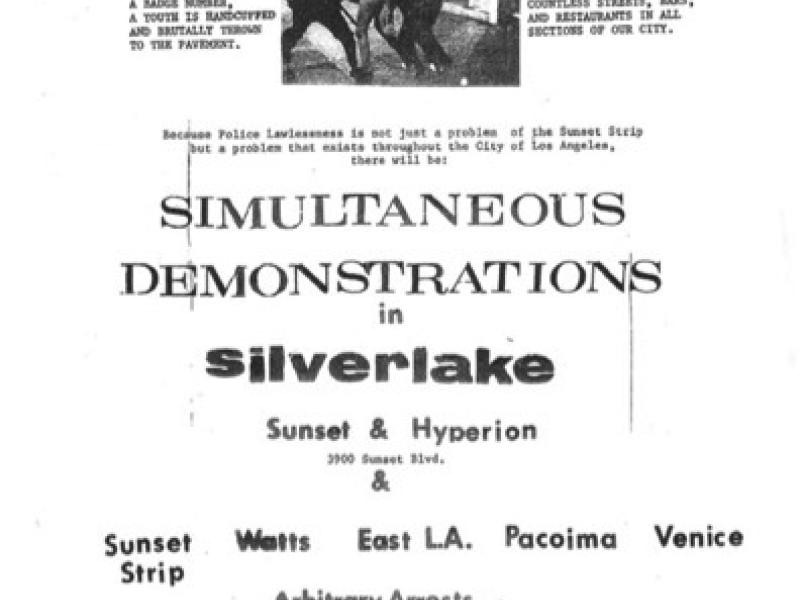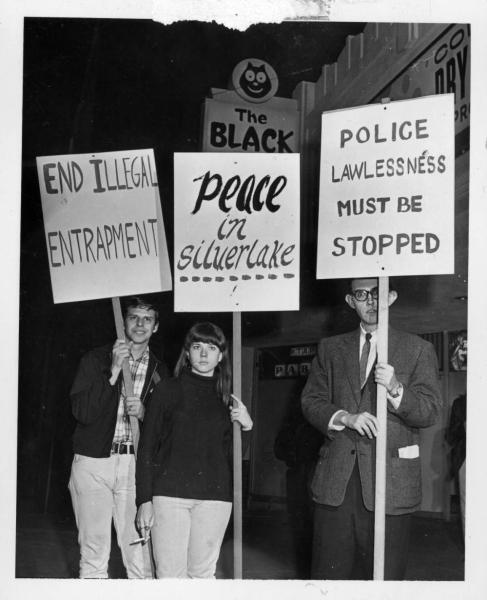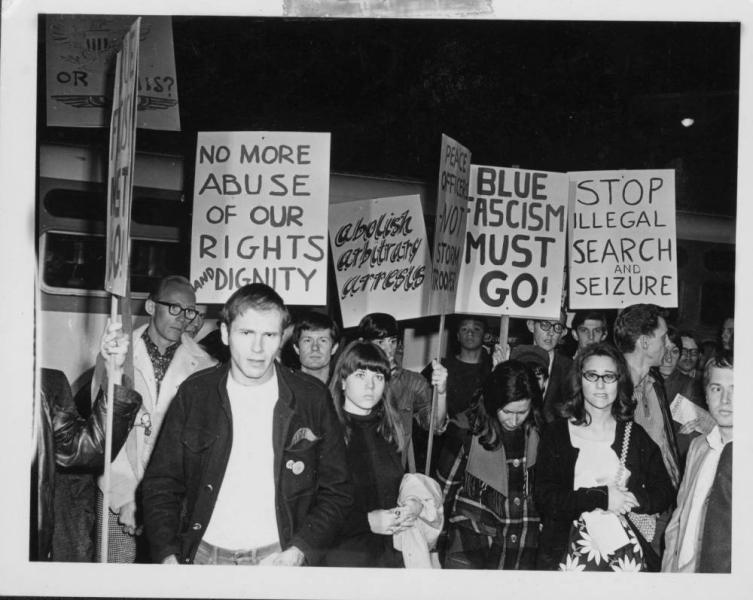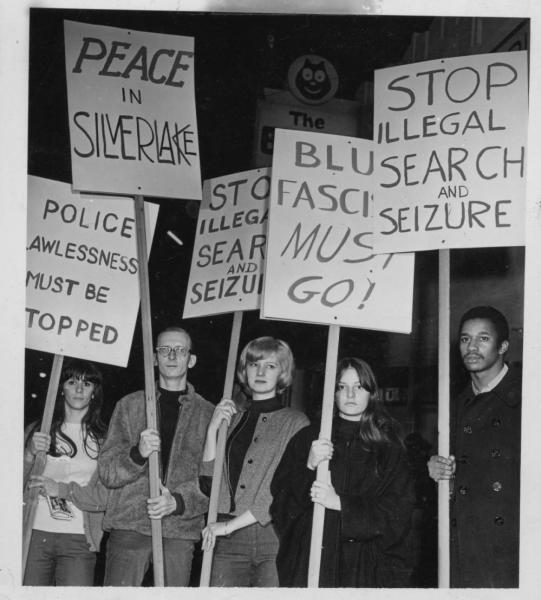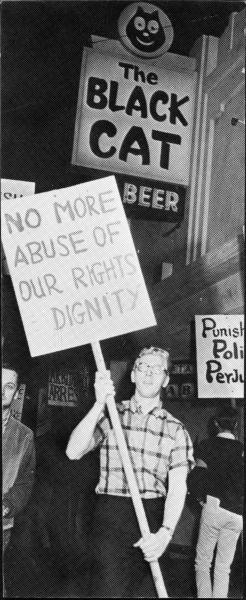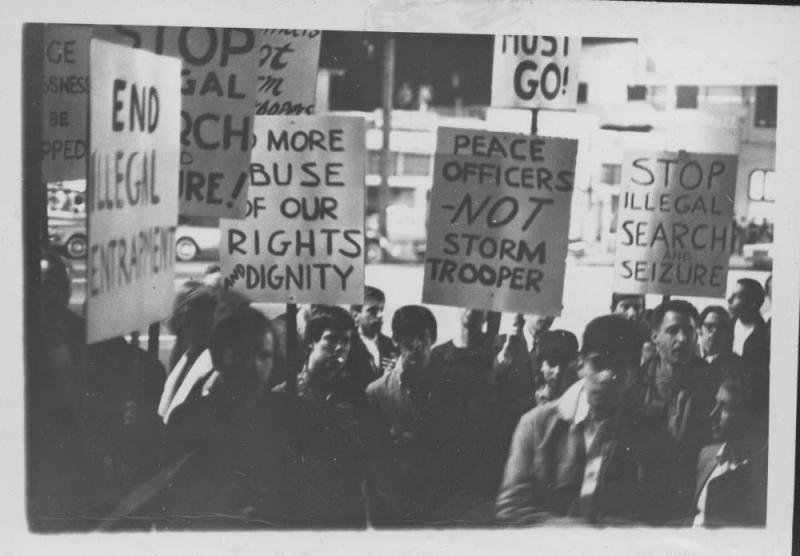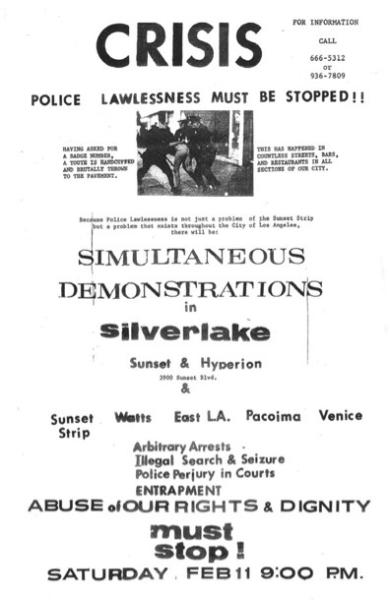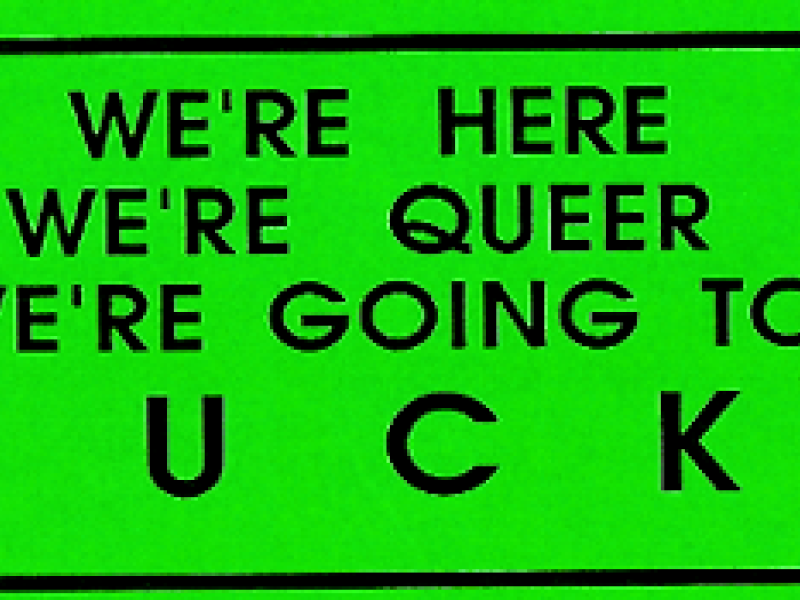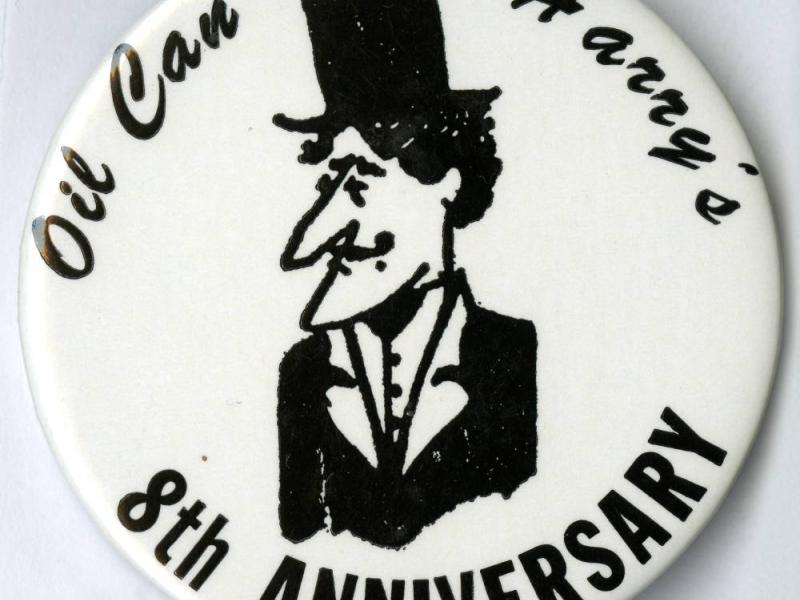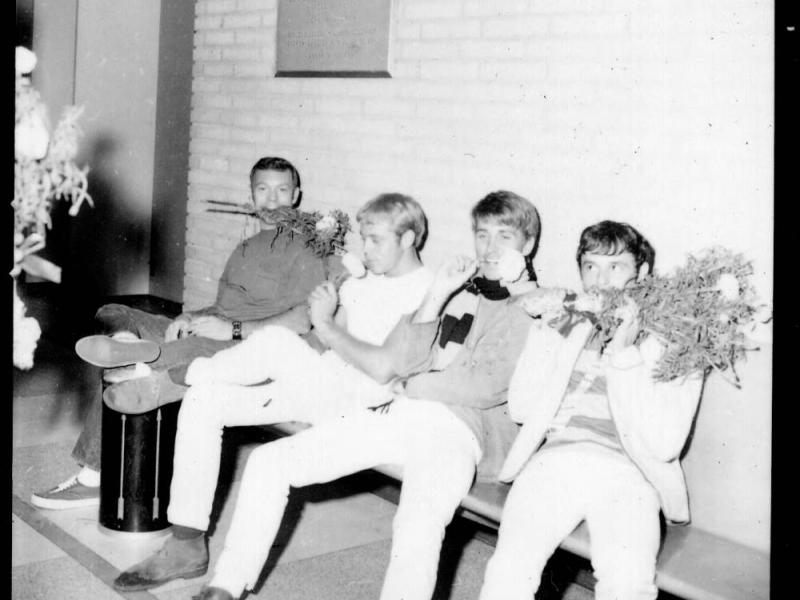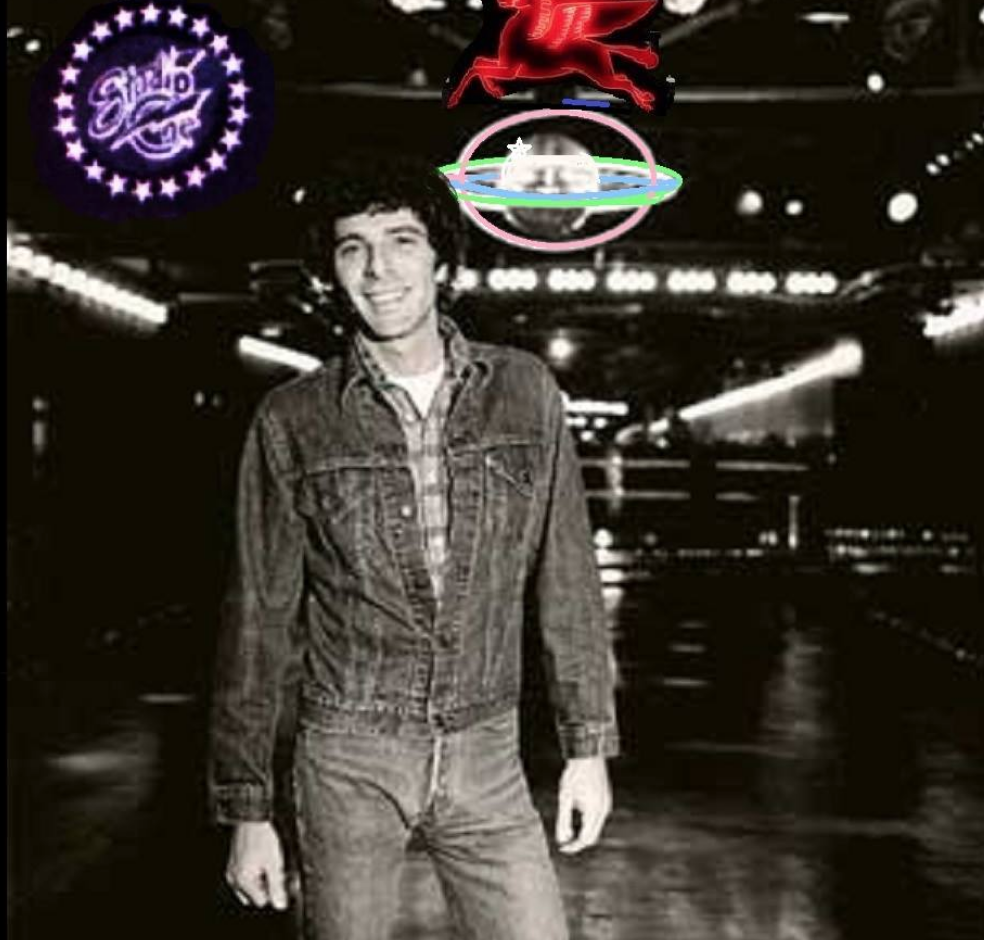The Black Cat Tavern, known simply as The Black Cat, was the site of the inciting incident of one of the first major acts of organized queer protest against police abuse. Opening it doors in November 1966, The Black Cat was a regular hangout for the queer community of Silver Lake despite the dangers surrounding LGBTQ spaces at the time. Police regularly arrested gay people for gathering, even in private, and many who gathered were vulnerable to acts of harrassment and/or public humiliation, such as I.D. checks or frisking. Despite this, The Black Cat grew popular as a destination for queer Angelenos looking for a safe space to gather.
On New Year's Eve 1967, a number of police officers entered The Black Cat disguised in plainclothes as civilians, inserting themselves into the mingling crowd of patrons counting down to midnight to watch and wait for men to kiss. At the stroke of midnight, Black Cat patron Alexei Romanoff is quoted remembering how "...people instinctively went over, hugged and kissed each other...two males kissing each other was against the law. Police were grabbing people and tearing them apart." As gay couples embraced in celebration, the infiltraiting police officers signaled to each other to alert their waiting reinforcements, and those already inside began beating and assaulting the male couples. As uniformed officers swarmed the bar alongside the plainclothes officers, the assaults escalated into brutal beatings that eventually spread to a neighboring bar, where those patrons were assaulted as well.
According to one source, two of the Black Cat patrons attempted to flee to the nearby bar New Faces, and were pursued by police, who demanded to see the New Faces manager after catching up to and arresting the patrons. The manager, a woman named Lee Roy, was called into the room, and the officers allegedly mistook her name as "Leroy." Assuming she was a man wearing a dress, which was illegal under a California law against cross-dressing, they then subjected Lee Roy to a brutal beating, additionally attacking a bartender that attempted to come to her aid. By the end of the night, 14 people were arrested, charged with "lewd conduct", and two of the men caught kissing would later be forced to register as sex offenders.
Romanoff describes the feelings of The Black Cat patrons as "absolute anger" after the raid. In the weeks following the raid, Romanoff alongside the organization PRIDE (Personal Rights in Defense and Education) organized a public demonstration. On February 11th, 1967, over 200 demonstrators peacefully gathered outside of The Black Cat, forming a picket line with a planned rally featuring speeches and printed leaflets promoting their cause against police abuse. The march was somber, serious, and orderly, with the protestors determined not to give the police any reason to escalate the situation or defame their efforts as a riot. "It was an angry demonstration," Romanoff said. "But orderly." Large numbers of police were dispatched to the scene, as city leaders feared a riot, but this only served to aid the protestors in staying calm, refusing to give the oppressive force any ammunition to continue the very practices they were protesting.
Notably, none of the protestors picket signs mention homosexuality explicitly; this was largely due to local straight nightclub/café Pandora's Box encouraging similar demonstrations among minorities in the surrounding Sunset Boulevard area to bolster a larger push-back against police brutality. As the late activist and historian Jim Kepner put it in a 1970 reflection on the Black Cat demonstration: "We arranged our demonstration to coincide with the others, but the owner of Pandora’s Box made several attempts to have us call off our demonstration when he discovered that the word ‘homosexual’ was going to be mentioned.” Under this new pressure, no explicit mentions of homosexuality were present during the Black Cat protests.
In 2008, the City of Los Angeles Cultural Heritage Commission installed a plaque on the building where the original Black Cat Tavern resided recognizing it as the site of the first documented LGBTQ civil rights demonstration in the nation. Despite the honor, by the time of the Black Cat demonstrations, there had been over 20 similar civil rights protests involving the LGBT community in the United States, including several in the Los Angeles area, such as the Cooper's Do-nuts protest of 1956. The organization PRIDE would eventually go on to become The Advocate, leading to The Advocate newsletter famously becoming a major LGBT publication and one of the most prolific sources of information for the queer community.
